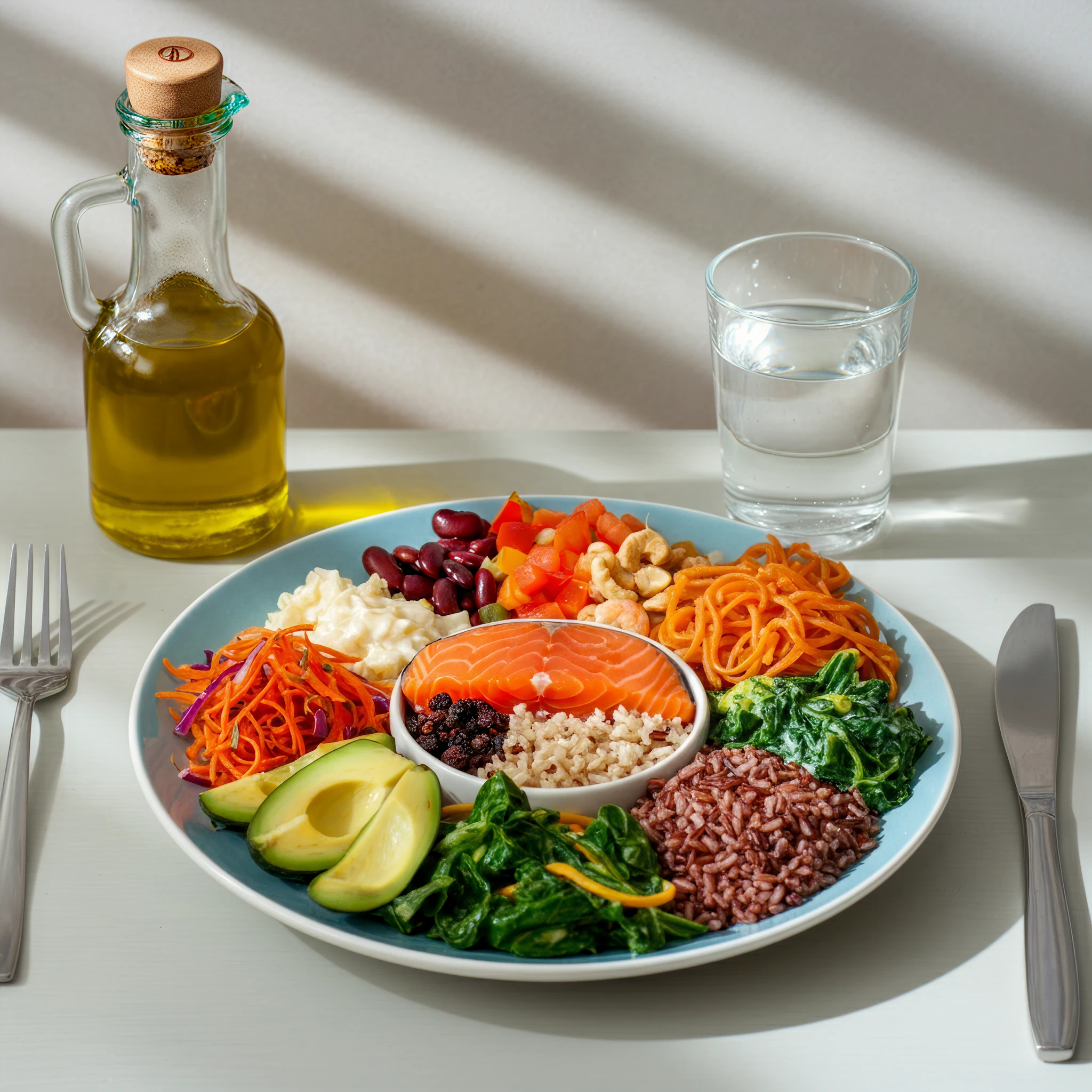If you’re striving for a healthier lifestyle and looking to make more informed dietary choices, the Healthy Eating Plate is a concept you need to know. Designed by nutrition experts at the Harvard T.H. Chan School of Public Health, this visual guide helps you build balanced meals that promote long-term health. Unlike fad diets or restrictive plans, the Healthy Eating Plate focuses on sustainable eating habits that are not only good for your body but also for the planet.
This article will explore the key elements of the Healthy Eating Plate, the benefits of adopting it, and how you can easily implement it into your daily routine.
What Is the Healthy Eating Plate?
The Healthy Eating Plate is a research-backed visual representation of what a balanced meal should look like. Imagine your plate divided into three sections:
- Half for vegetables and fruits to maximize nutrient intake and add variety and color.
- One-quarter for whole grains to fuel your body with energy and promote better digestion.
- One-quarter for healthy proteins to support muscle growth and overall wellness.
Additionally, the Healthy Eating Plate emphasizes the use of healthy oils, recommends water and other low-sugar beverages, and encourages regular physical activity. It’s more than a fad; it’s a lifestyle framework that prioritizes both the quality of food and its impact on your health and the environment.
Breaking Down the Healthy Eating Plate
1. Focus on Vegetables and Fruits (Half of Your Plate)
- The Goal: Fill half of your plate with colorful vegetables and fruits for maximum vitamins, minerals, and fiber.
- What to Include: Think leafy greens, broccoli, carrots, berries, and citrus fruits.
- What to Avoid: Potatoes and French fries don’t count as vegetables here because of their negative impact on blood sugar.
Why?: Vegetables and fruits are nutrient-dense and low in calories, making them the foundation of a healthy diet.
2. Choose Whole Grains (One-Quarter of Your Plate)
- The Goal: Replace refined grains with whole grains.
- What to Include: Whole-grain bread, brown rice, quinoa, oats, and barley.
- What to Avoid: White bread, white rice, and other refined grains.
Why?: Whole grains have a gentler effect on blood sugar and insulin compared to refined grains, helping to sustain energy and reduce the risk of chronic diseases.
3. Select Healthy Proteins (One-Quarter of Your Plate)
- The Goal: Prioritize lean, healthy protein sources.
- What to Include: Fish, poultry, beans, lentils, and nuts.
- What to Limit or Avoid: Red meat, processed meats like bacon and sausage, and cheese.
Why?: Healthy protein sources are versatile, support muscle growth, and pair beautifully with vegetables for well-rounded meals.
4. Healthy Oils in Moderation
- The Goal: Use small amounts of healthy vegetable oils for cooking and dressings.
- What to Include: Olive oil, canola oil, sunflower oil, and peanut oil.
- What to Avoid: Butter, partially hydrogenated oils, and trans fats.
Why?: Healthy fats improve cholesterol levels and support heart health, while trans fats contribute to cardiovascular issues.
5. Drink Smart
- The Goal: Prioritize water and unsweetened beverages while limiting sugary options.
- What to Include: Water, unsweetened tea or coffee (consume in moderation).
- What to Limit: Milk/dairy (1–2 servings a day) and juice (1 small glass a day).
- What to Avoid: Sugary drinks like sodas and energy drinks.
Why?: Staying hydrated is crucial, and sugary beverages add empty calories with little nutritional value.
6. Stay Active
- An active lifestyle complements a healthy diet. From walking and yoga to high-intensity workouts, physical activity promotes weight control, mental health, and overall fitness.
Benefits of Adopting the Healthy Eating Plate
Adopting the Healthy Eating Plate offers countless health, lifestyle, and environmental benefits:
- Improved Nutrition and Health: Reduces the risk of chronic illnesses such as heart disease, diabetes, and obesity by focusing on nutrient-dense, whole foods.
- Simplified Meal Planning: The visual guide helps you create balanced meals without complicated calorie counting or food restrictions.
- Supports Sustainability: Opting for more plant-based options and minimizing processed foods reduces your carbon footprint and helps conserve the planet’s natural resources.
How to Apply the Healthy Eating Plate in Your Life
At Home
- Plan meals with the Healthy Eating Plate in mind. For example, pair grilled chicken (protein) with quinoa (whole grain) and a spinach salad topped with colorful veggies.
- Experiment with plant-based proteins like lentils or tofu to diversify your diet.
On the Go
- When dining out, choose dishes that align with the Healthy Eating Plate’s principles. Opt for grilled fish, substitute fries with steamed veggies, or request whole-grain bread for your sandwich.
Meal Prep Made Easy
- Use the Healthy Eating Plate as a foundation for batch cooking. Prepare portions of grains, proteins, and veggies so you can assemble balanced meals quickly throughout the week.
Why This Concept Matters Today
The Healthy Eating Plate is not just about individual health. It combines personal wellness with a broader goal of planet sustainability. Sustainable eating choices, such as increasing plant-based options and reducing processed foods, help combat climate change and protect natural resources for future generations.
Get Started Today
It’s never too late to make smarter food choices. Start small by incorporating one or two elements of the Healthy Eating Plate into your daily routine, and build from there. Consider downloading the Healthy Eating Plate guide from Harvard’s Nutrition Source to always have it on hand for reference.
By following the Healthy Eating Plate, you’re not just eating smarter; you’re taking an active role in your health and the future of our planet.








